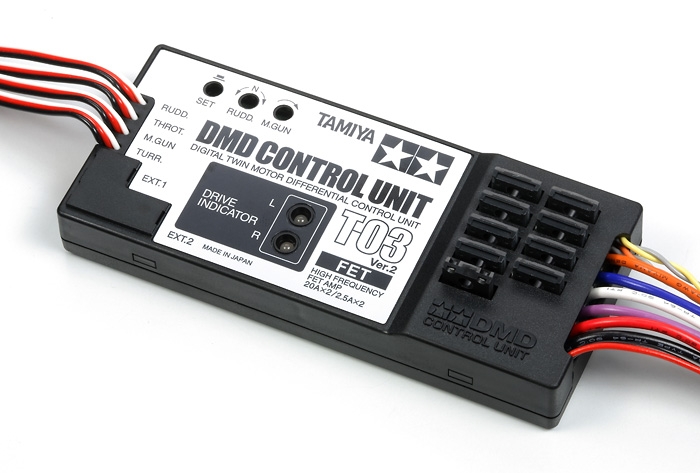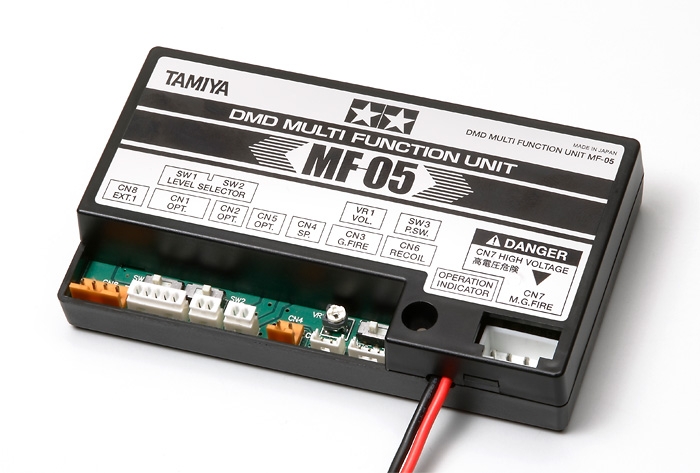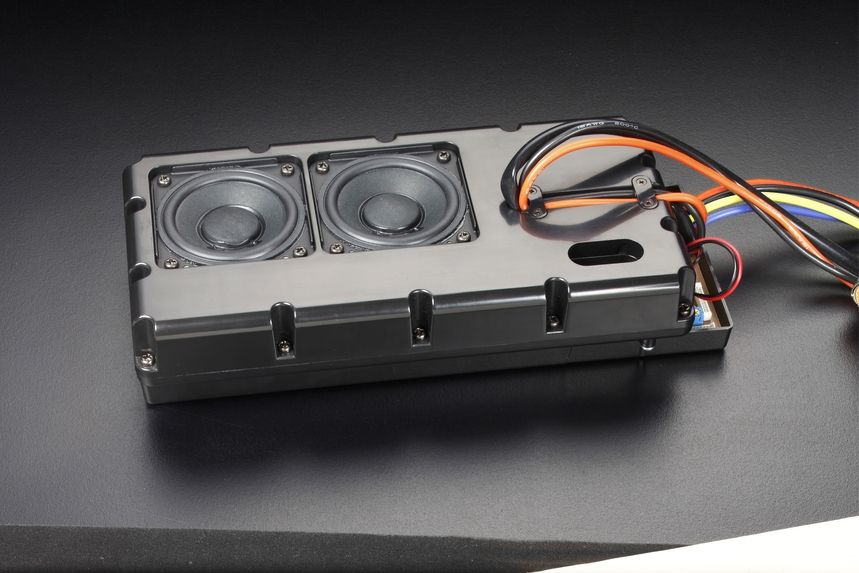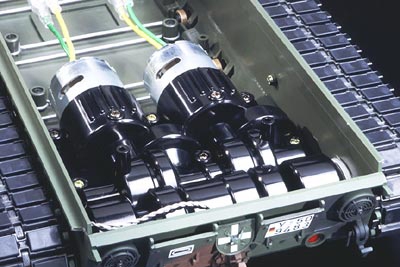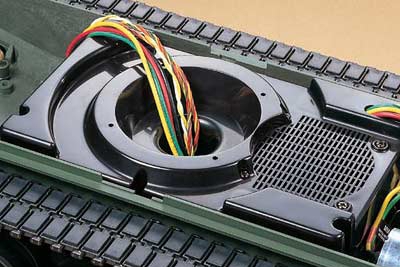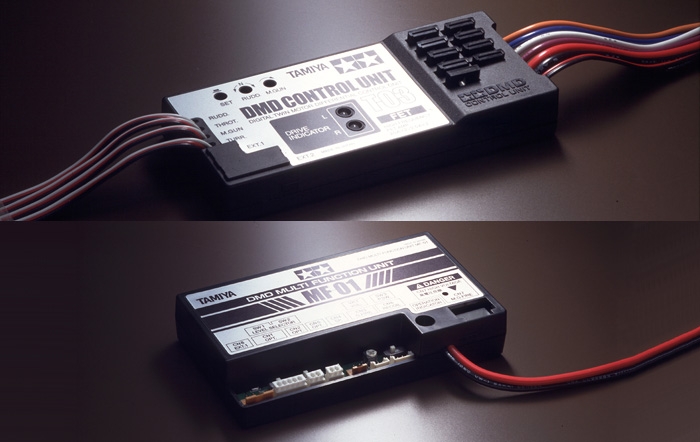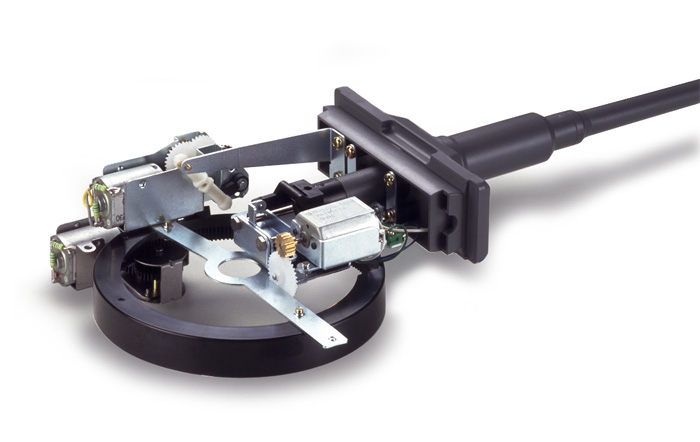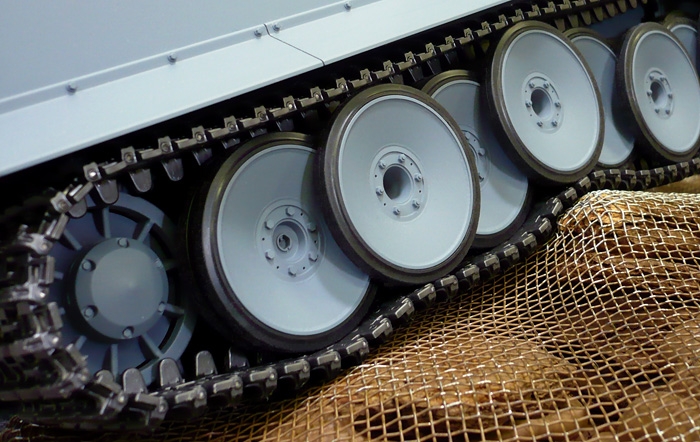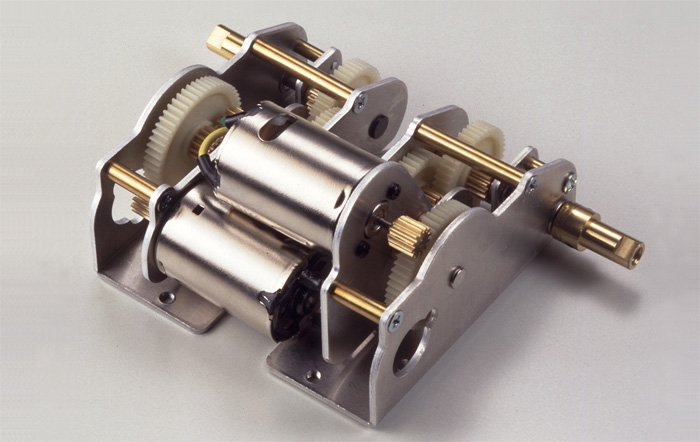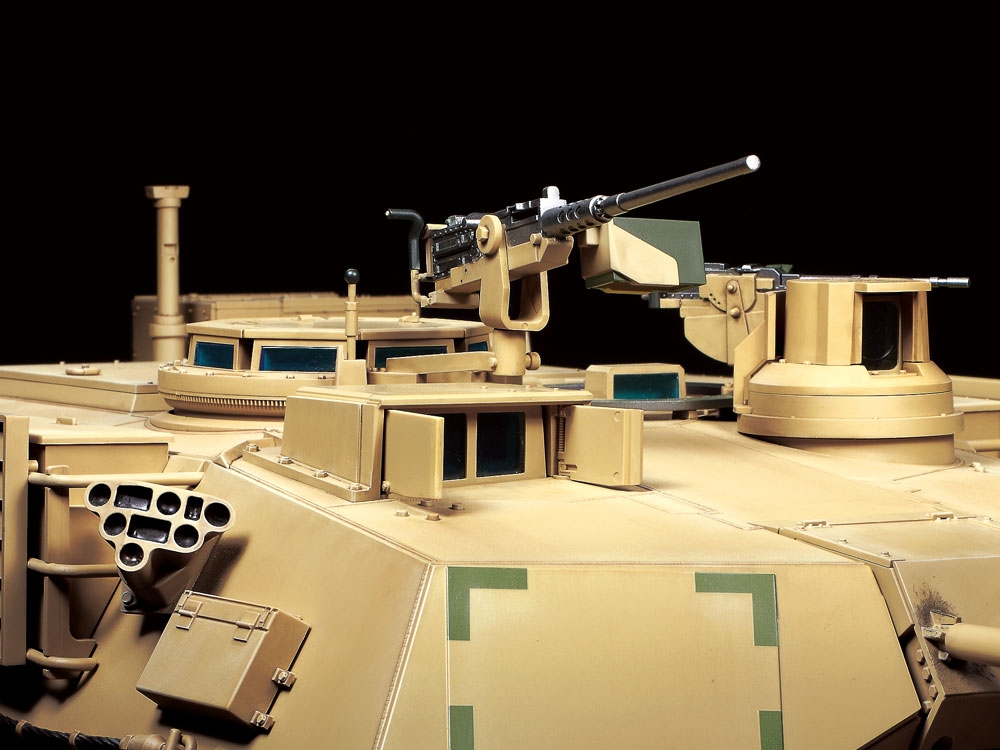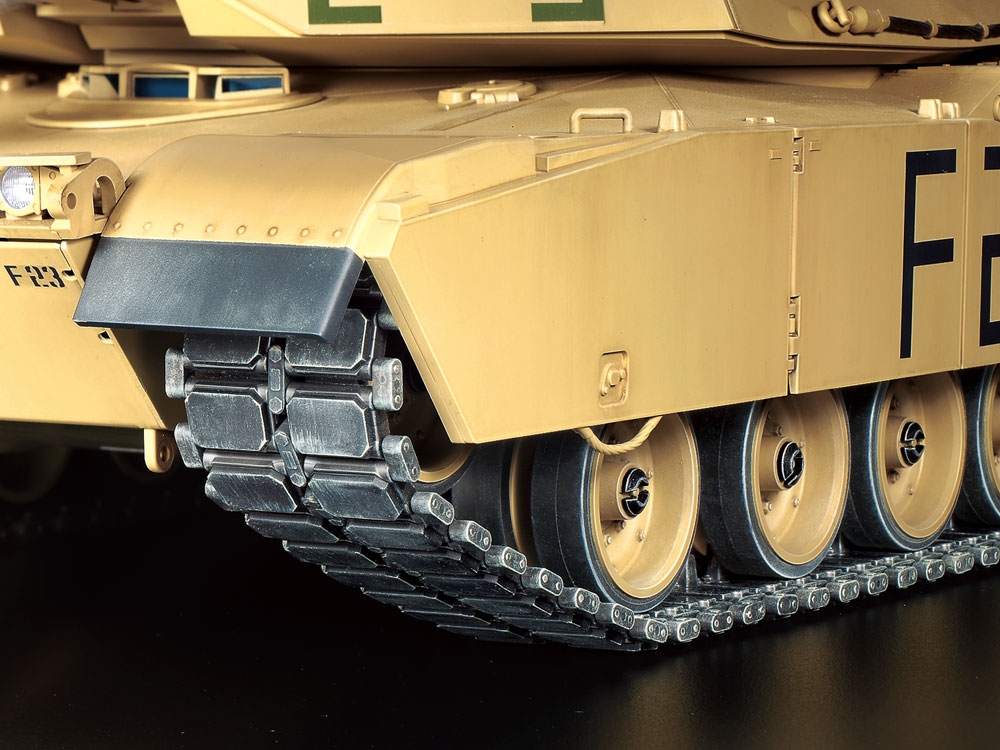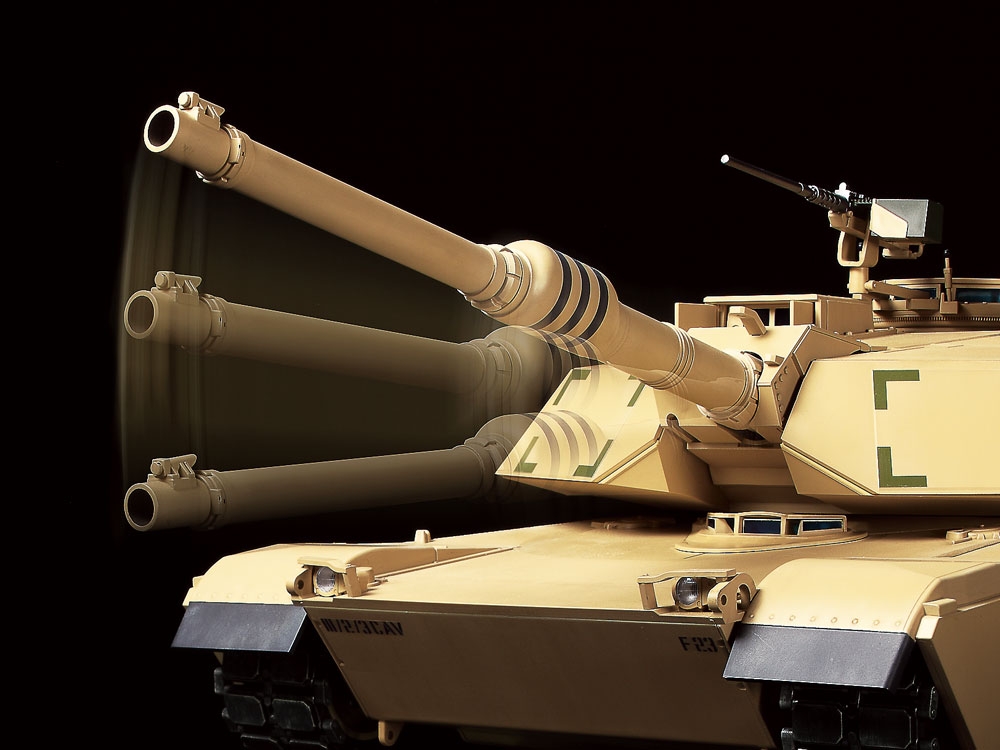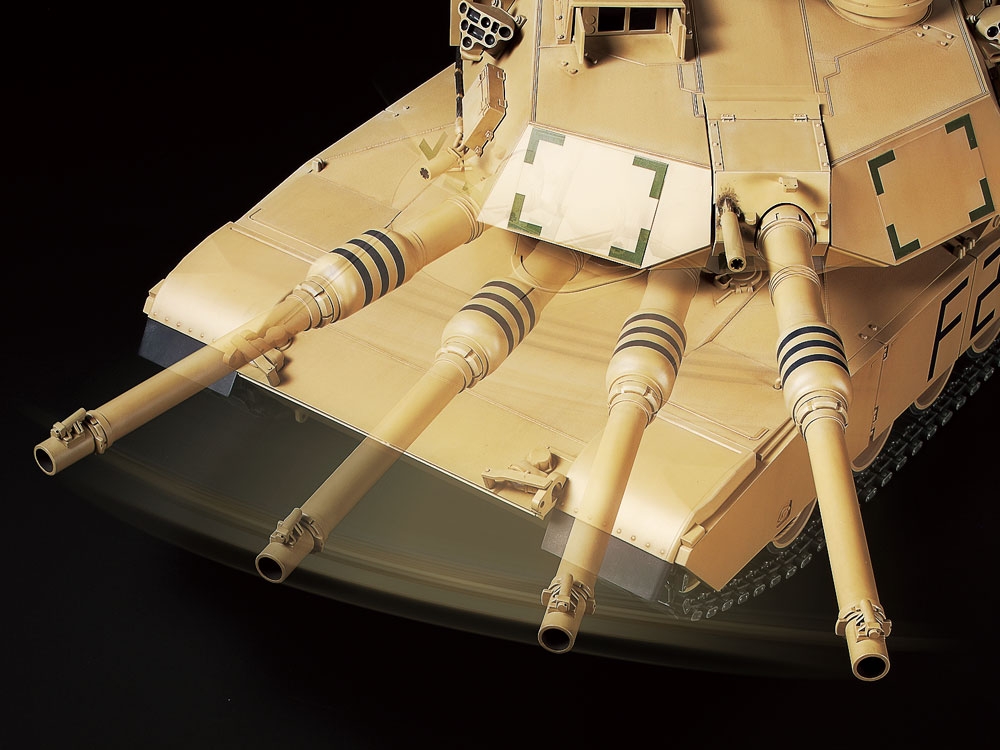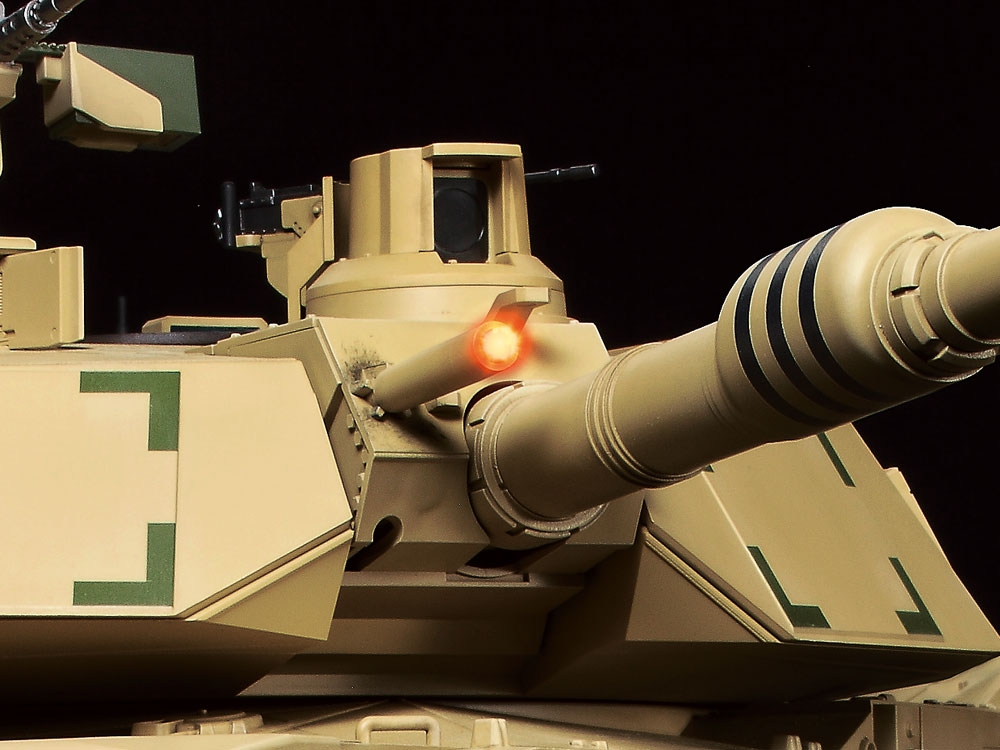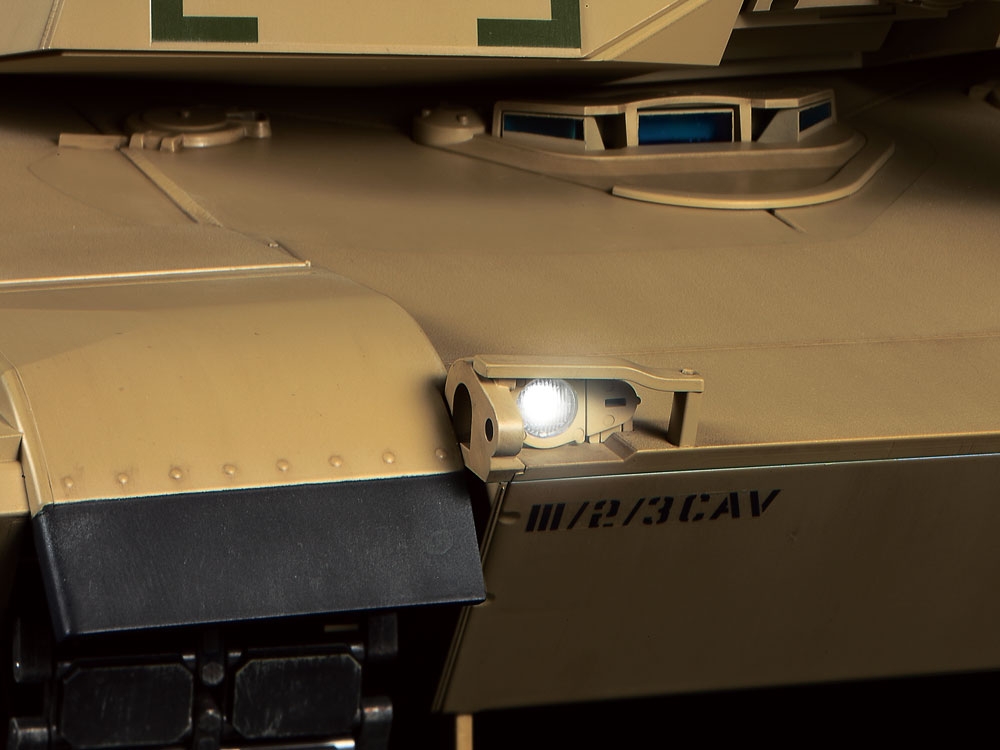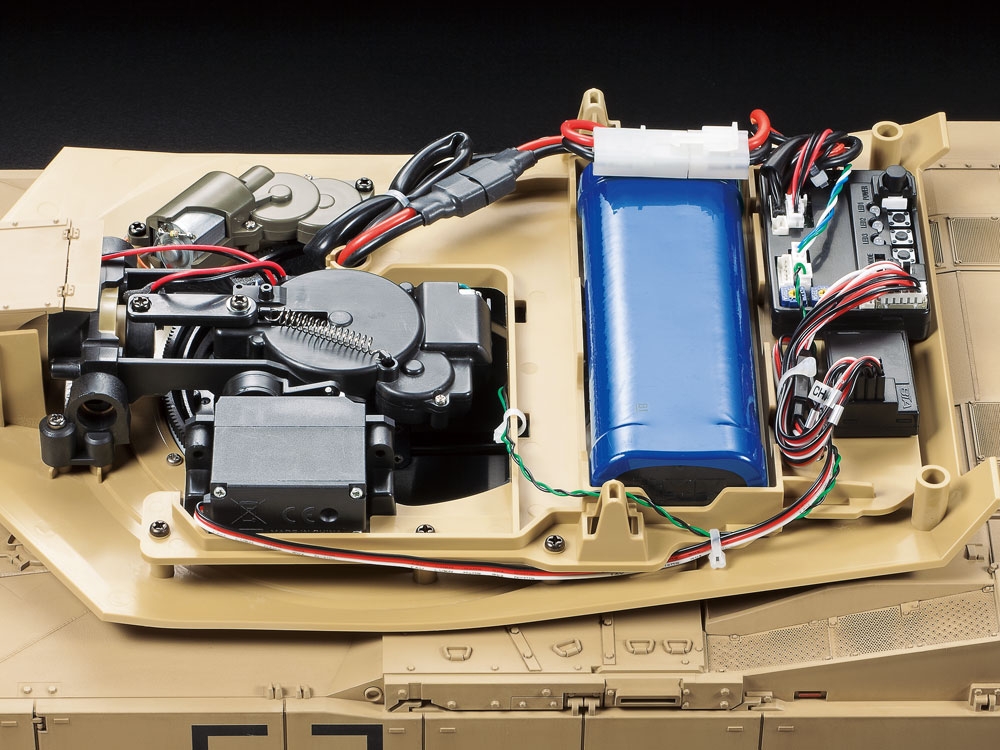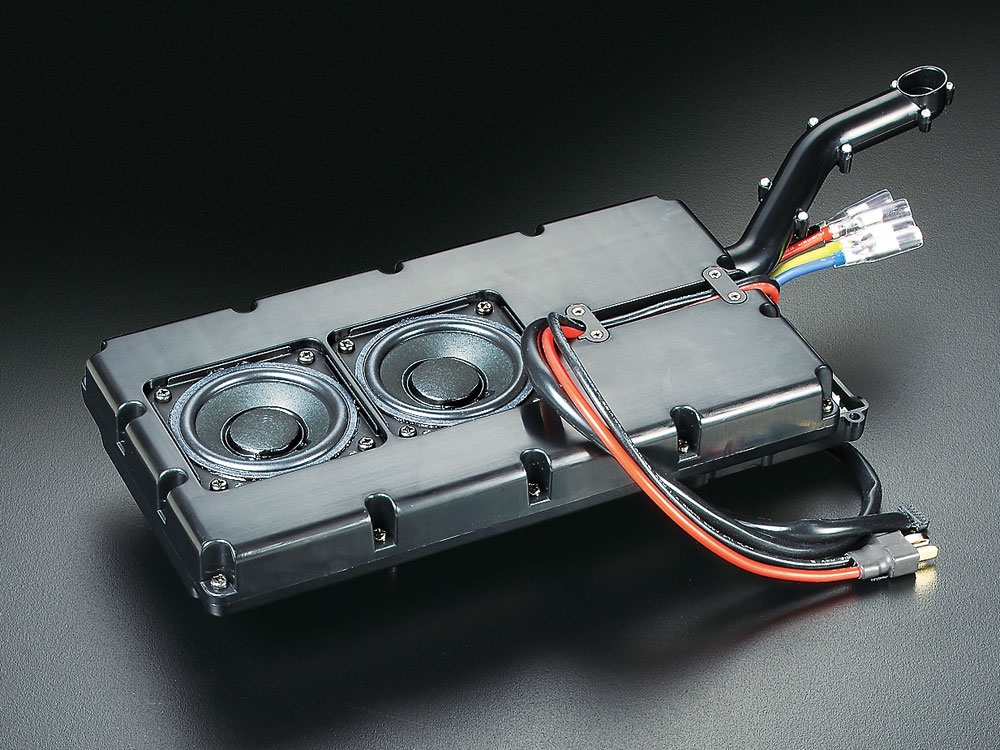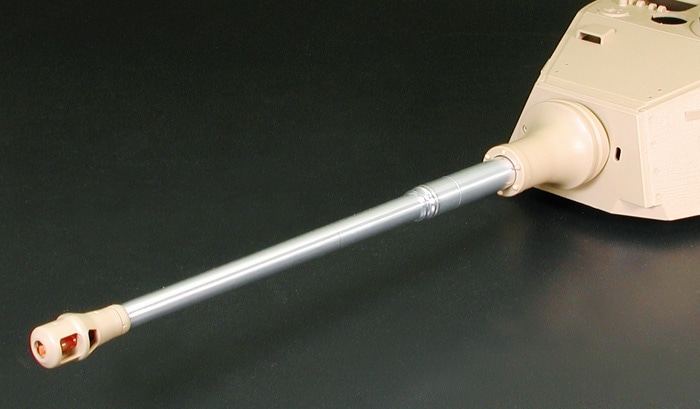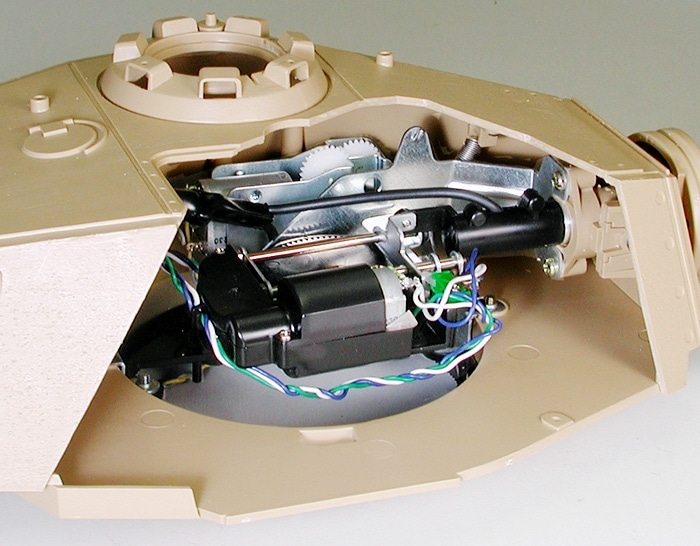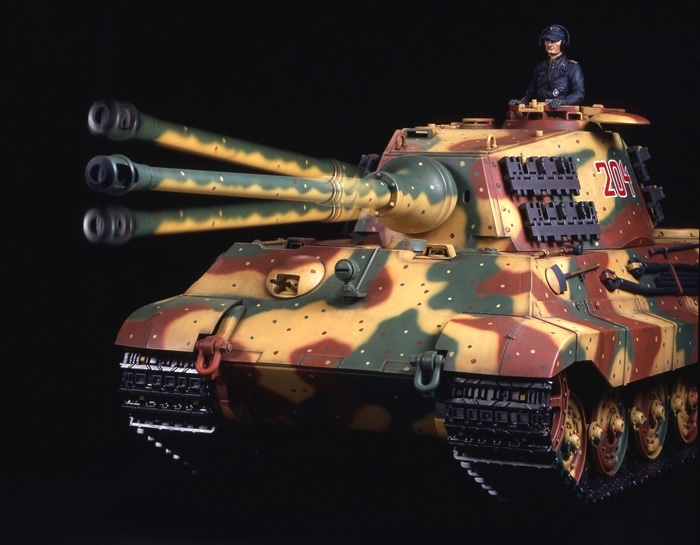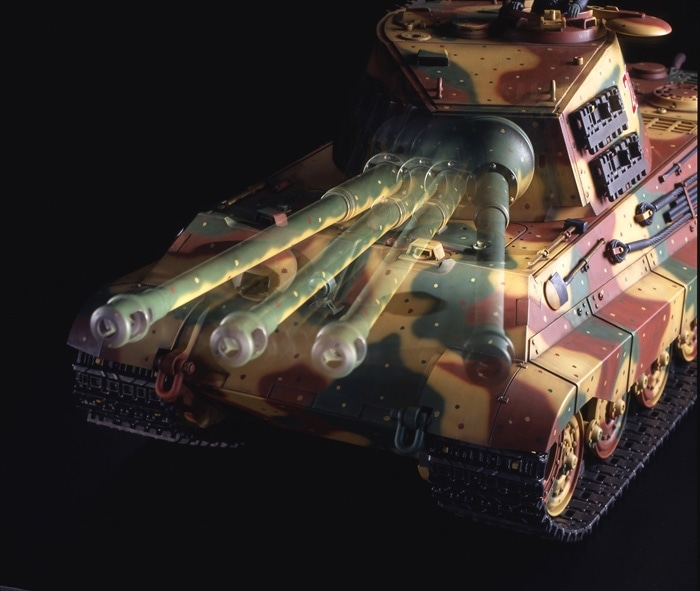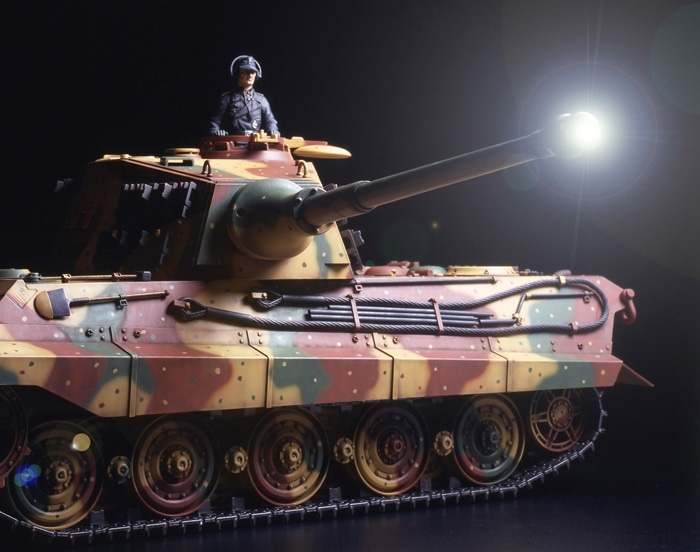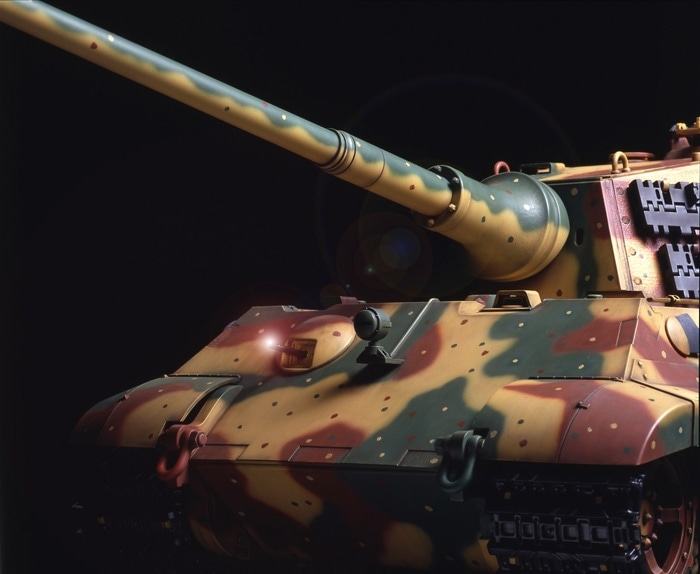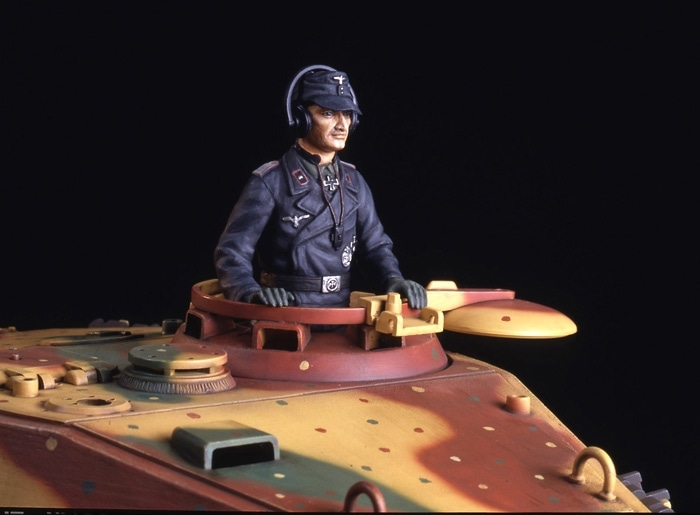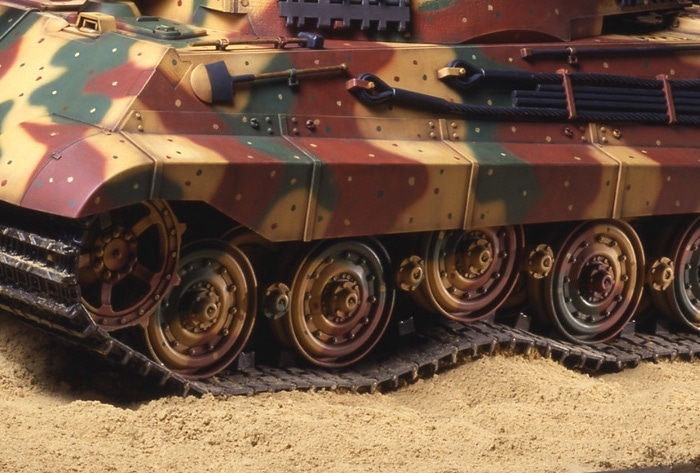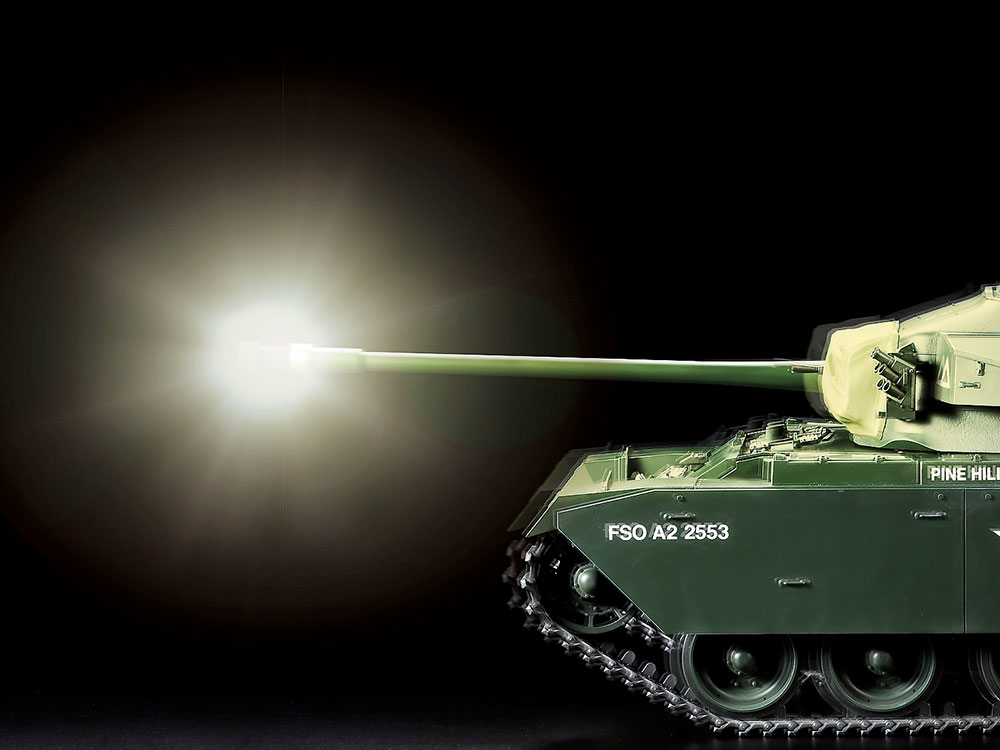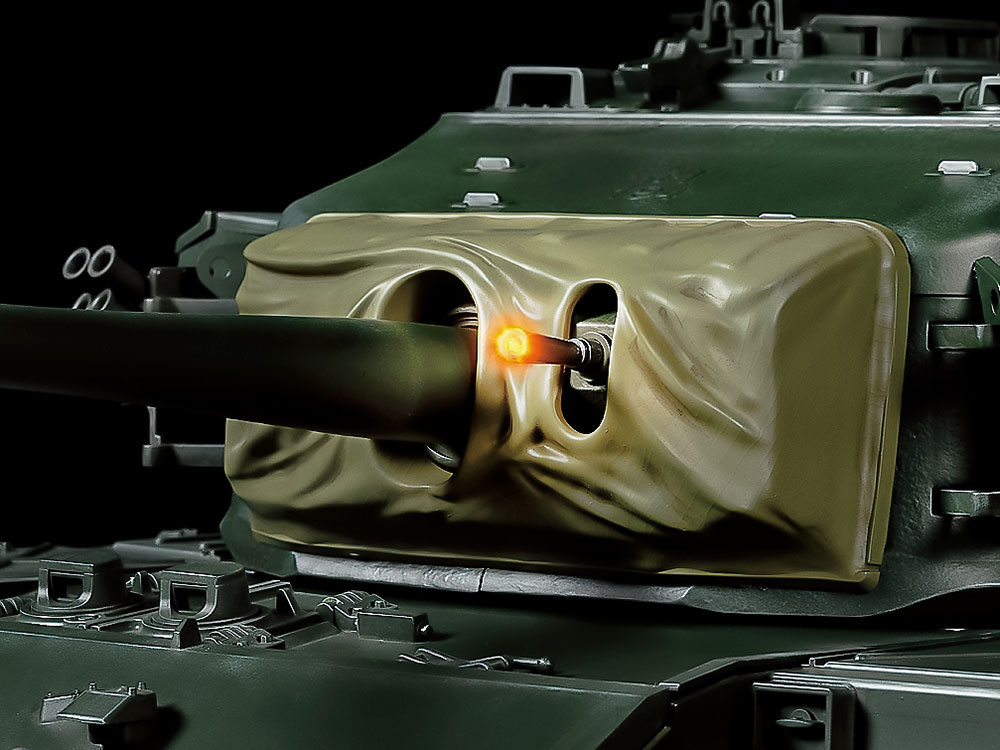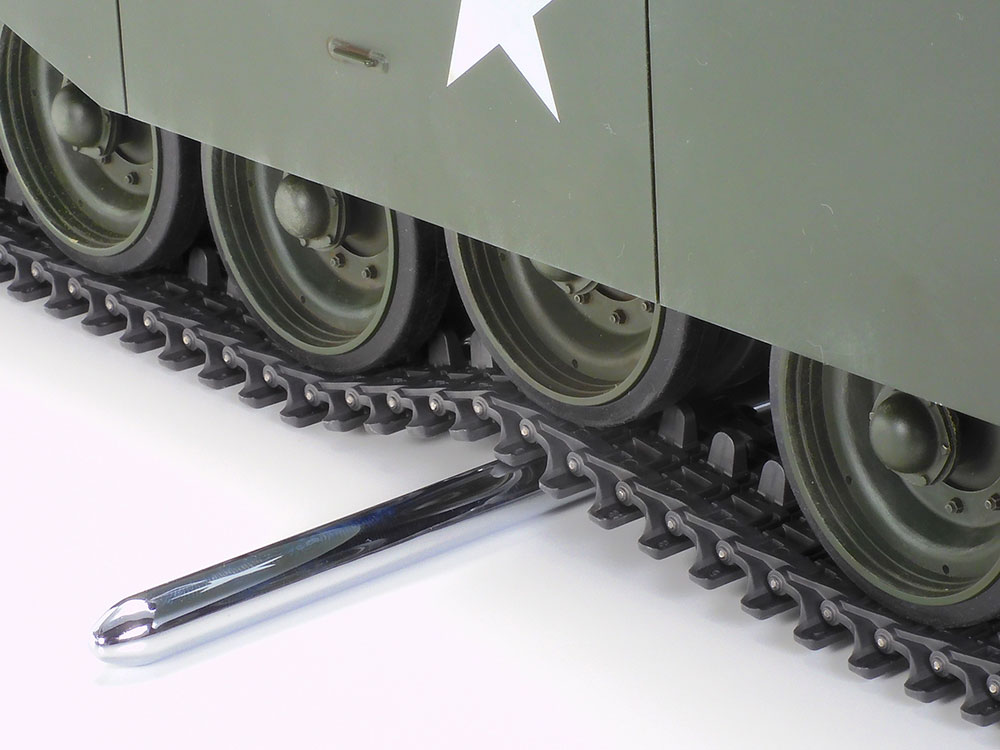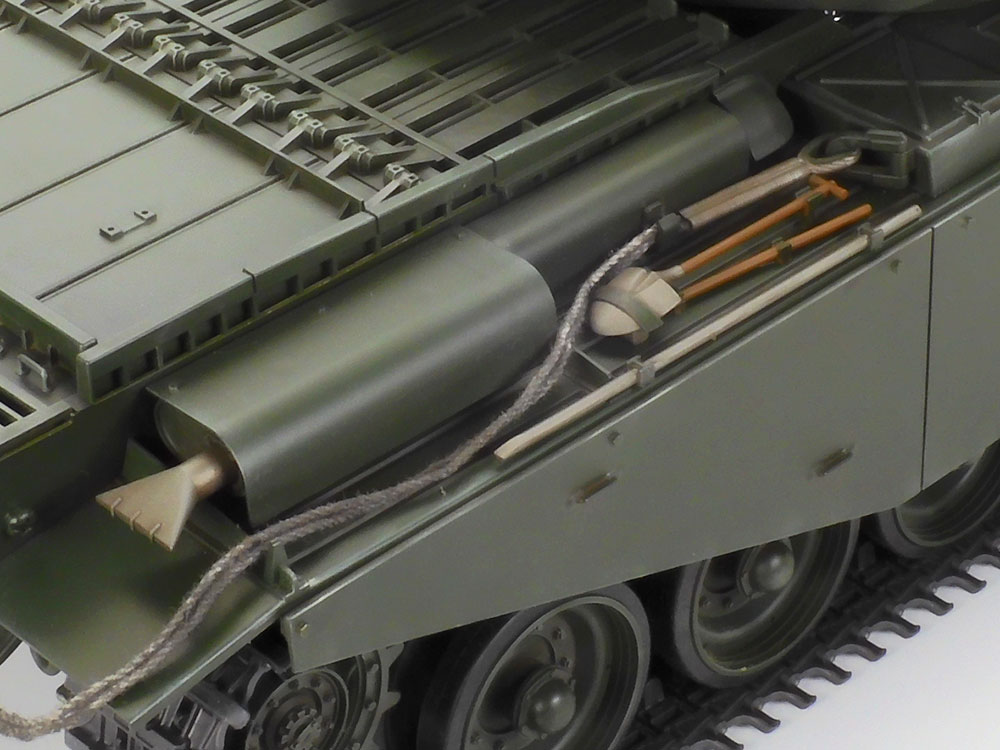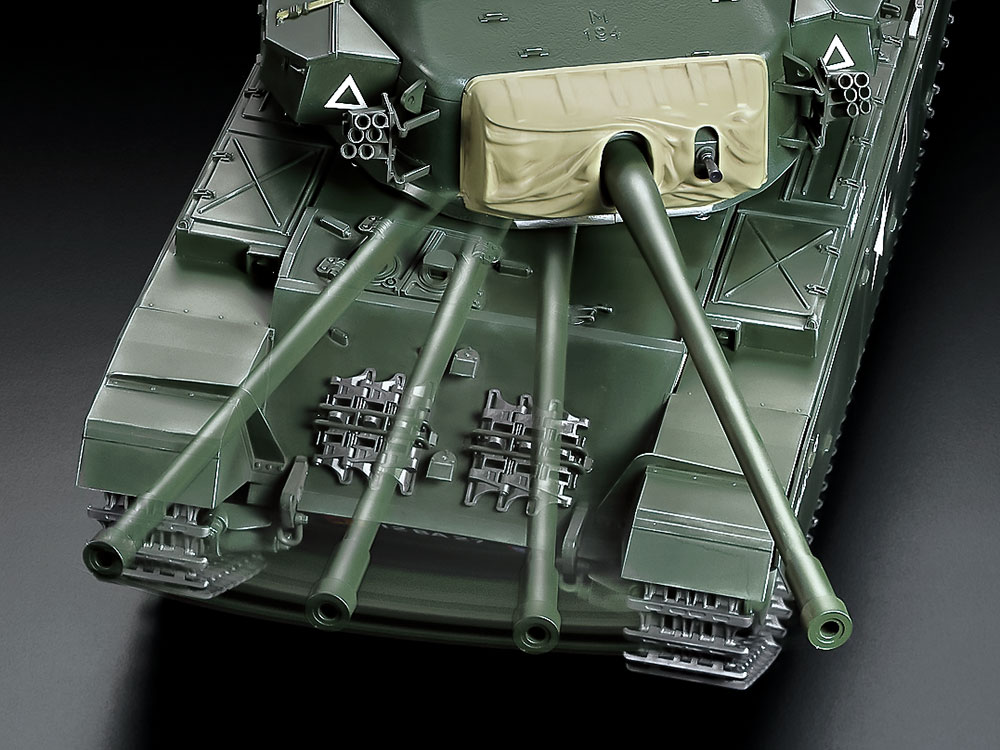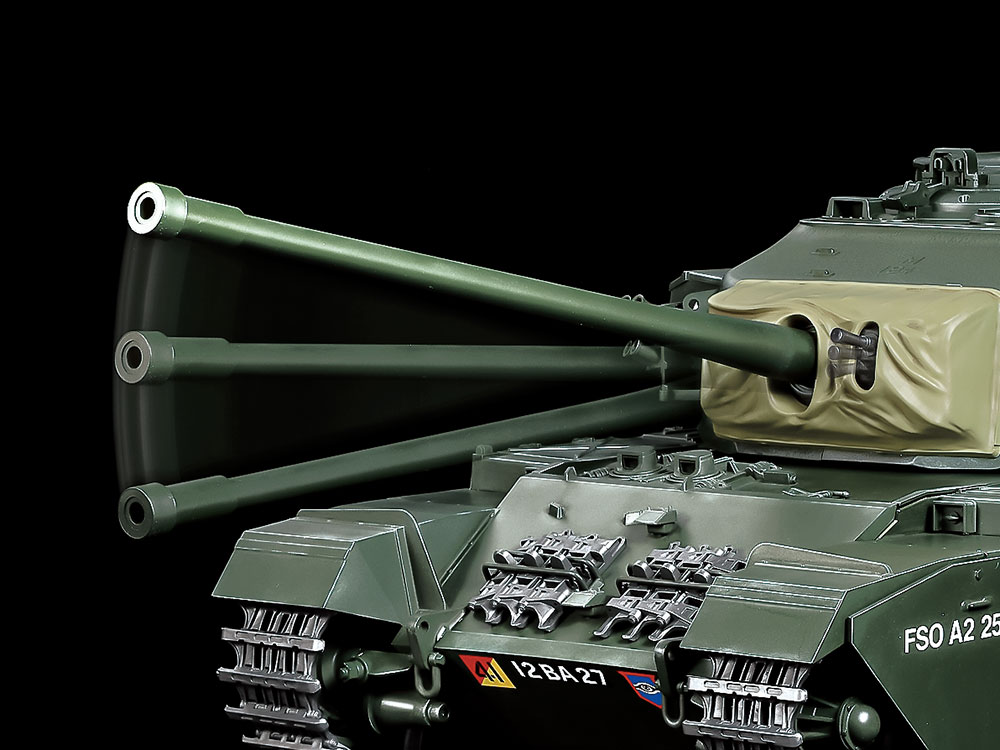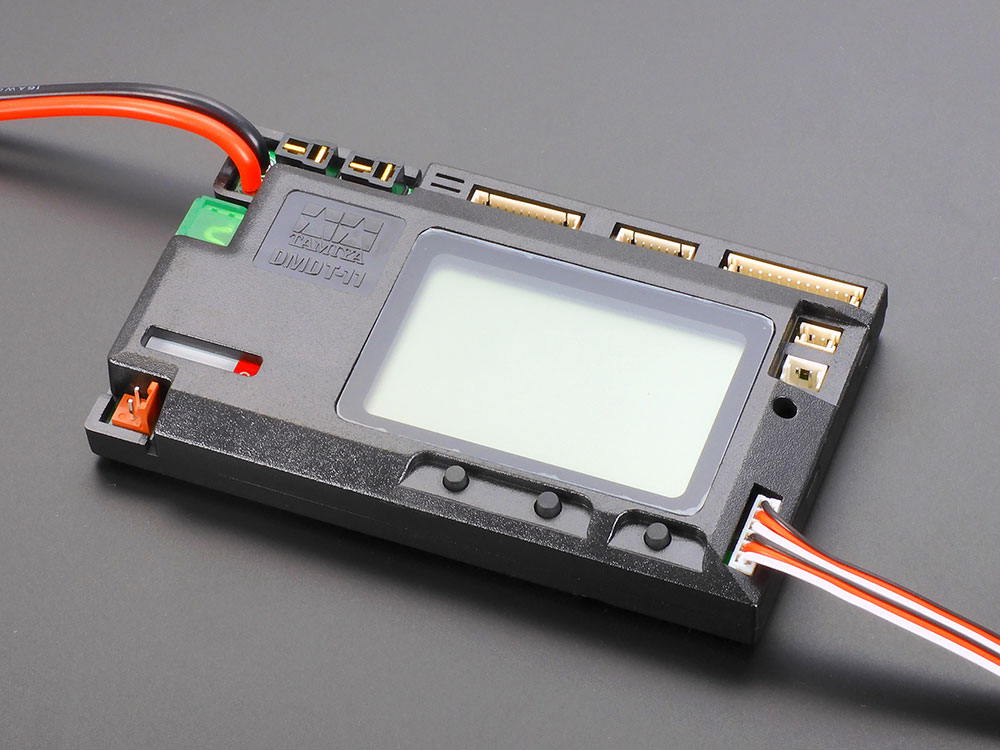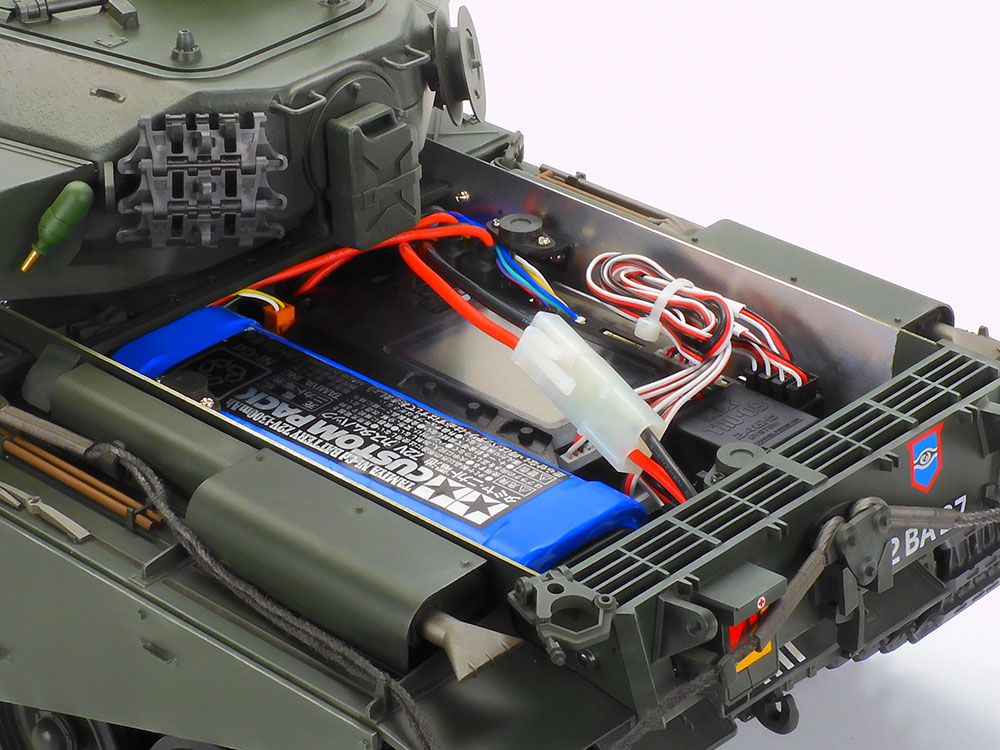SPONSORED ARTICLE
One segment that we have not talked about in a while are RC tanks. Tamiya is the clear leader in the market as they make incredible ultra-realistic RC versions of the real thing. Over the years, Tamiya has offered numerous types and scales and here we will focus on the largest scale they offer, the awesome 1/16-scale full option RC tanks. Here are Tamiya’s current 1/16-scale full option RC tank line-up.
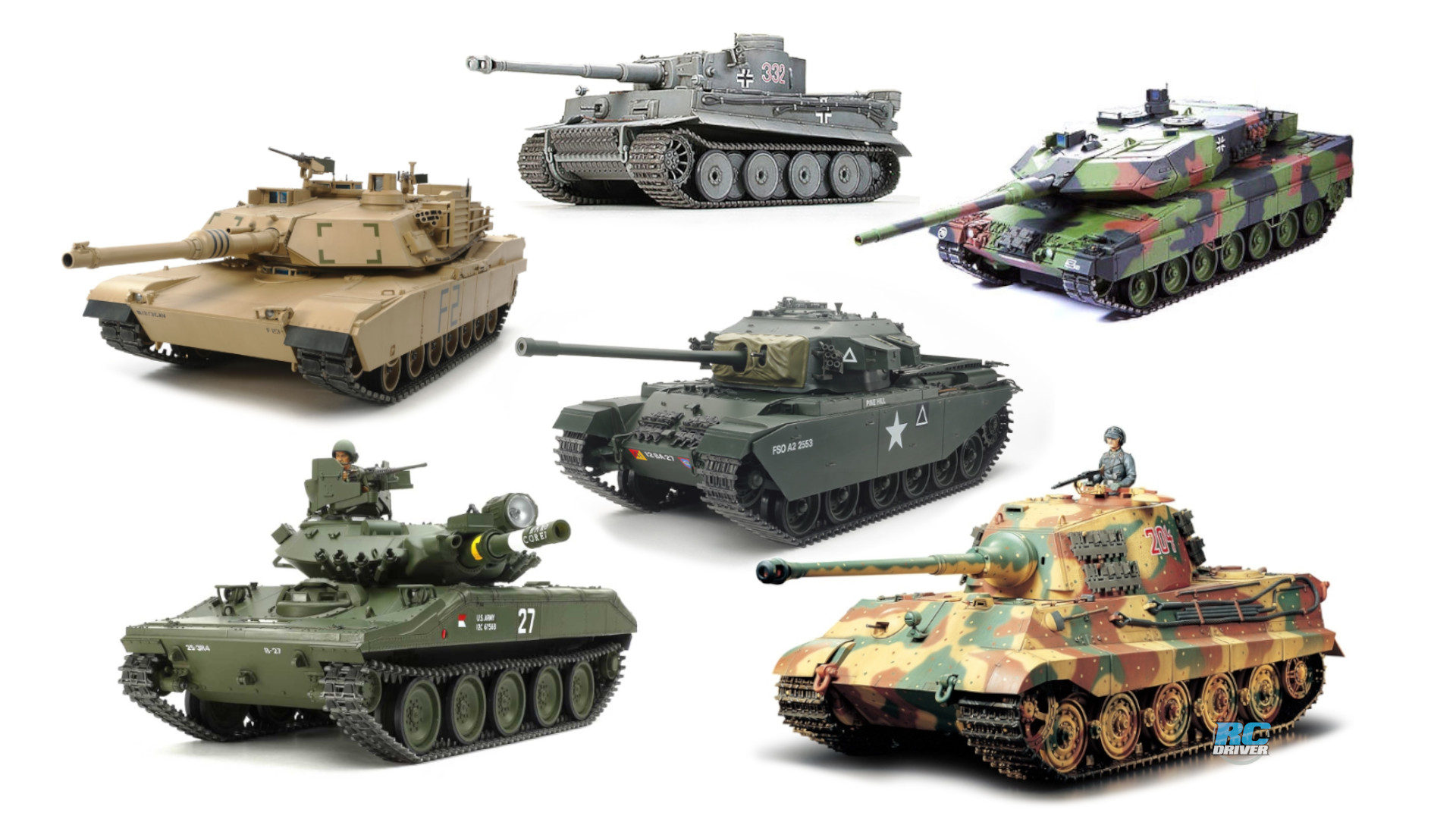
WHAT MAKES THESE TANKS “FULL OPTION”?
The “Full Option” designation is what makes these tanks truly special and stand out from other brands. Tamiya includes a DMD Control Unit and DMD Multi-Function Unit with speaker box that links the tank’s actions with realistic sounds. For example, authentic engine sounds like engine start up, acceleration, idle and engine shut down. There are also turret rotation sounds, gun sounds-main and machine gun fire sounds and track related sound effects. A really cool fact is that Tamiya did not take the easy route and give all their tanks generic sounds, but rather the genuine sounds for each tank. Tamiya designers traveled to museums and other locations around the world to record the actual engines of the tanks so that the sound is 100-percent authentic in the RC version. Even going so far as to recording the metallic clanking of the tank tracks. Furthermore, when the main gun fires or the machine gun, a LED flashes in the barrel to resemble a muzzle flash and it is linked to the appropriate firing sound for greater realism.
GERMAN LEOPARD 2 A6—#56020
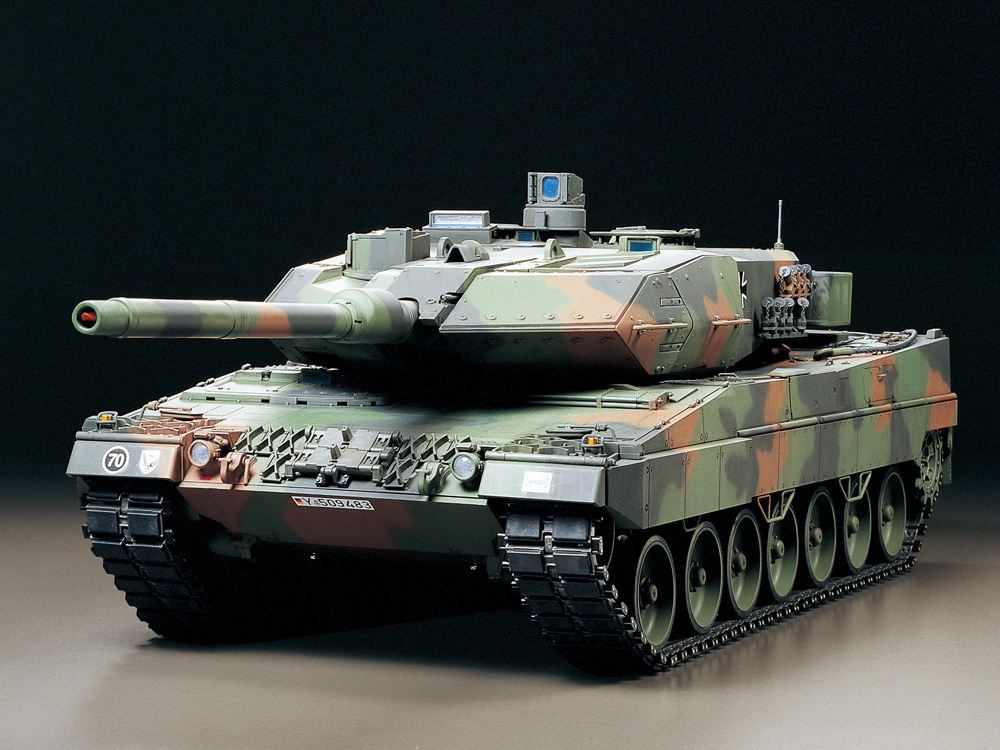
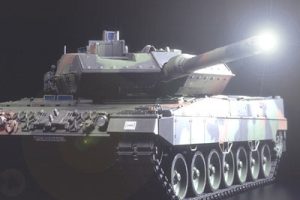 The first of two of the modern tanks in the Tamiya’s Current 1/16-Scale full option RC tank line-up and considered the best modern day Main Battle Tank (MBT) is the massive German Leopard 2 A6. Tamiya equipped the Leopard with the T-07 DMD unit that gives this tank more features than other Tamiya tanks. Once fired up the T-07 unit will match engine sounds with tank movements as well as controlling various lighting combinations activated by the transmitter. On top of that it generates gun firing, gun elevation and turret rotation sounds that further boosts this models realism. When the cannon or machine gun fires, a xenon flash tube enhances the firing effect and the barrel of the main gun recoils and then goes back smoothly to its original spot via a gearbox mounted in the turret.
The first of two of the modern tanks in the Tamiya’s Current 1/16-Scale full option RC tank line-up and considered the best modern day Main Battle Tank (MBT) is the massive German Leopard 2 A6. Tamiya equipped the Leopard with the T-07 DMD unit that gives this tank more features than other Tamiya tanks. Once fired up the T-07 unit will match engine sounds with tank movements as well as controlling various lighting combinations activated by the transmitter. On top of that it generates gun firing, gun elevation and turret rotation sounds that further boosts this models realism. When the cannon or machine gun fires, a xenon flash tube enhances the firing effect and the barrel of the main gun recoils and then goes back smoothly to its original spot via a gearbox mounted in the turret.
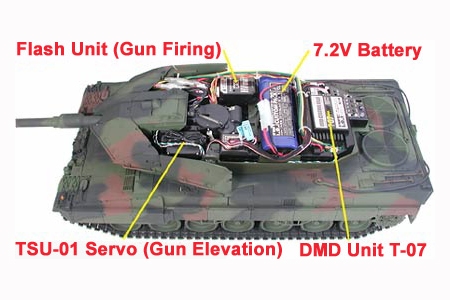
Located in the turret is the battery pack and the T-07 unit for quick accessibility. Tamiya fitted out the turret ring with 20 steel balls to allow it to rotate nice and smooth. A newly designed system that controls the gun elevation and recoil effect utilizes a servo that make these movements appear more realistic. And Tamiya really went the extra mile and even added a system that while the turret rotates with the gun in the lowered position, the barrel will automatically raise to avoid coming into contact with the engine deck…just like on the actual tank. The barrel itself is machined from aluminum.
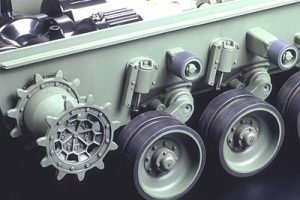 Placed below the turret, in the center of the hull is the sound speaker unit. At the rear is a specially designed gearbox that is powered by two high-torque 540-type brushed motors. This gearbox allows for smooth power transmission at either high or low speeds. This system accurately imitates the transmission of the full-size Leopard. One motor controls forward/reverse while the other motor allows the tank to turn and rotate. For suspension, torsion bars are spec’d and give this big tank plenty of mobility on- and off-road. Die cast aluminum sprockets are used and rotate the double-pin tracks, which are outfitted with rubber pads like the real Leopard. Don’t worry about needing the build the tracks because Tamiya has done it for you.
Placed below the turret, in the center of the hull is the sound speaker unit. At the rear is a specially designed gearbox that is powered by two high-torque 540-type brushed motors. This gearbox allows for smooth power transmission at either high or low speeds. This system accurately imitates the transmission of the full-size Leopard. One motor controls forward/reverse while the other motor allows the tank to turn and rotate. For suspension, torsion bars are spec’d and give this big tank plenty of mobility on- and off-road. Die cast aluminum sprockets are used and rotate the double-pin tracks, which are outfitted with rubber pads like the real Leopard. Don’t worry about needing the build the tracks because Tamiya has done it for you.
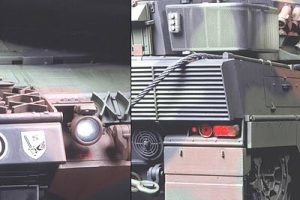 Some added details that further push the Leopards realism are the various operating lights like headlights, tail lamps, brake lights, black-out lights and rotating light. There are seven lighting combinations with four for the tank during combat operations and three during non-combat operations. There is also a bunch of parts reproduced with photoetched parts that enhance the scale looks like the grills on the engine compartment cooling fans and mesh baskets mounted on the back of the turret.
Some added details that further push the Leopards realism are the various operating lights like headlights, tail lamps, brake lights, black-out lights and rotating light. There are seven lighting combinations with four for the tank during combat operations and three during non-combat operations. There is also a bunch of parts reproduced with photoetched parts that enhance the scale looks like the grills on the engine compartment cooling fans and mesh baskets mounted on the back of the turret.
GERMAN TIGER 1—#56010
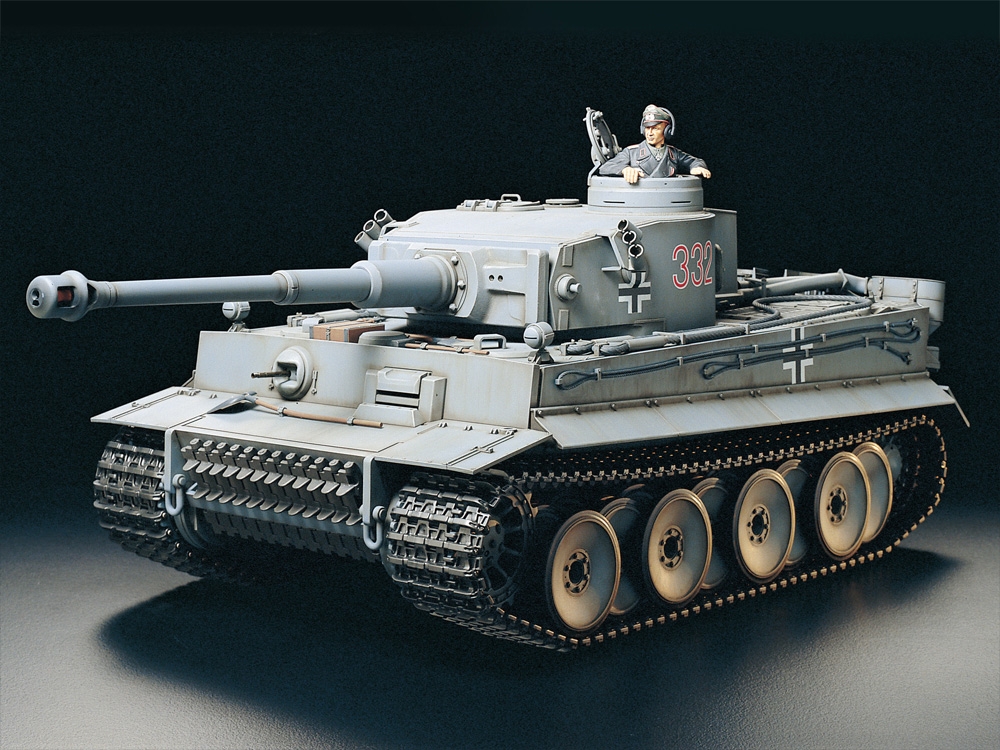
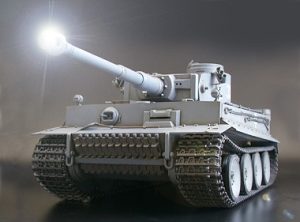 Here we have the German Tiger 1 heavy tank that was a vital asset for the Germans in World War II. It started service in 1942 and was the most powerful and sophisticated tank in the world. The Panzerkampfwagen VI Tiger Ausf. E is the official name, yet is best known as the Tiger 1. It was propelled by an enormous V-12 700hp engine and well outfitted with armament including a deadly 88mm cannon which vastly outmatched the US Sherman tanks. The engine sound was recorded from a real tank and includes things like battery start up, crank start up, flywheel sound, driving, stops to idle, etc.
Here we have the German Tiger 1 heavy tank that was a vital asset for the Germans in World War II. It started service in 1942 and was the most powerful and sophisticated tank in the world. The Panzerkampfwagen VI Tiger Ausf. E is the official name, yet is best known as the Tiger 1. It was propelled by an enormous V-12 700hp engine and well outfitted with armament including a deadly 88mm cannon which vastly outmatched the US Sherman tanks. The engine sound was recorded from a real tank and includes things like battery start up, crank start up, flywheel sound, driving, stops to idle, etc.
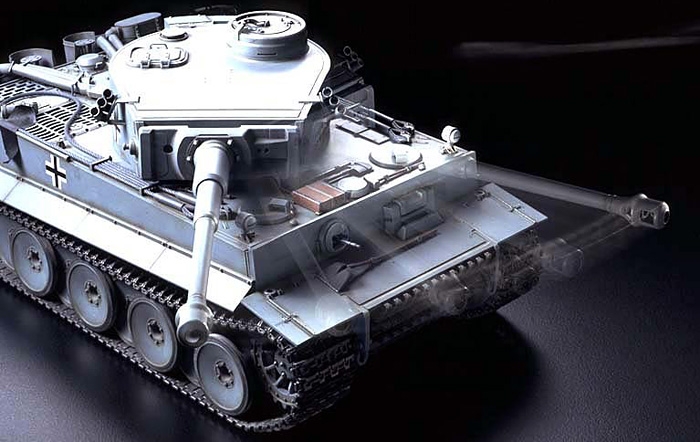
Tamiya gave this Tiger 1 a front mounted gearbox that is spun by two 380 type brushed motors. They are capable of operating together or individually to allow the tank to pivot turn and move in forward and reverse. When negotiating rough terrain, torsion bars and suspension arms combine with the wide tracks to absorb the bumps and dips. The turret mounted cannon can be elevated, depressed and swung either to the left or right.
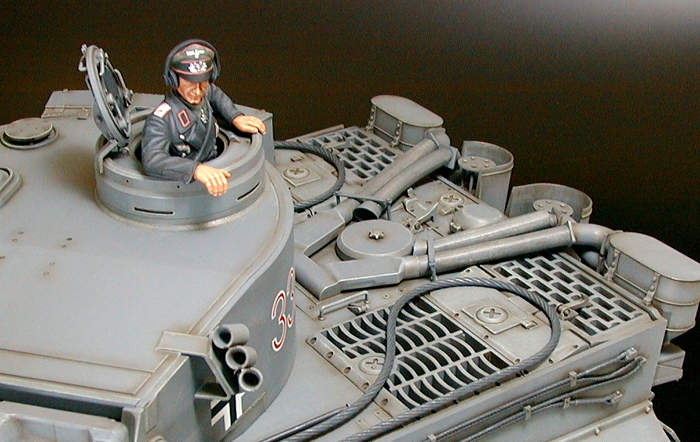
US M1A2 ABRAMS—#56041
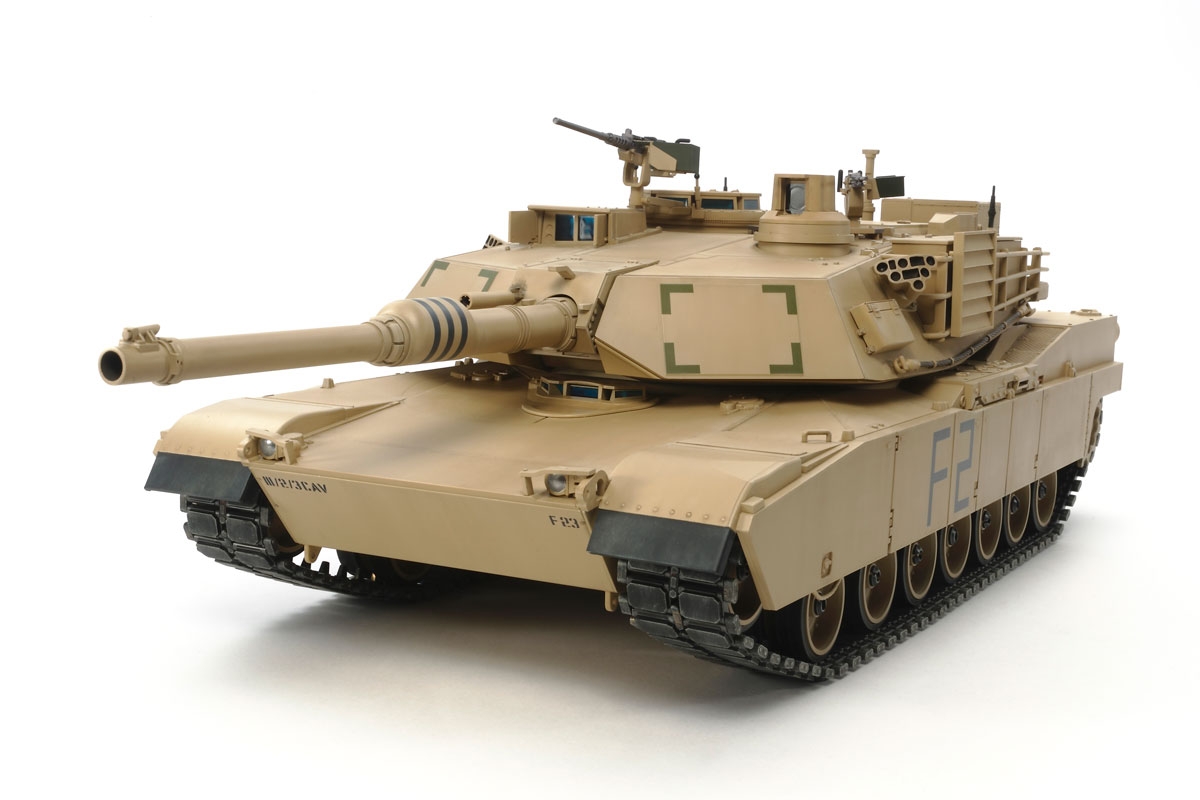
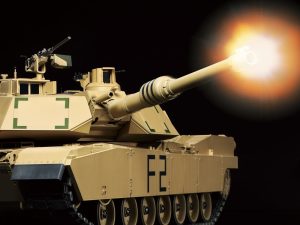 The second modern main battle tank is the formidable US M1A2 Abrams. This immense and highly advanced tank has been around since the early 80’s and has seen a few iterations. The M1A2 depicted here was introduced in 1992 and boasted new technology that brought this tank into the digital age. It featured depleted uranium armor, a modified commander’s cupola, Intravehicular Information System (IVIS), Commander’s Independent Thermal Viewer (CITV) turret and a new style vision block, plus many other enhancements.
The second modern main battle tank is the formidable US M1A2 Abrams. This immense and highly advanced tank has been around since the early 80’s and has seen a few iterations. The M1A2 depicted here was introduced in 1992 and boasted new technology that brought this tank into the digital age. It featured depleted uranium armor, a modified commander’s cupola, Intravehicular Information System (IVIS), Commander’s Independent Thermal Viewer (CITV) turret and a new style vision block, plus many other enhancements.
Tamiya did an awesome job replicating the M1A2 Abrams and expertly recreated its angular design and gave it some serious size and just over two feet in length. The hull of the chassis it made from aluminum along with the suspension arms, drive sprockets and a few other items. Dual 540 motors dual provide power to the robust gearbox. An aluminum barrel is included with the kit and has elevation and depression movement actuated by a 130-type motor and servo. The tracks are molded from durable resin and utilize metal pins and connectors.
Like the other tanks discussed here, the Abrams has the Multi-Function Unit to control the numerous actions, lights and realistic sounds this tank can perform including turret rotation, gun elevation, headlights, taillights and barrel flash. The sound is generated by a dual speaker setup that brings the model to life.
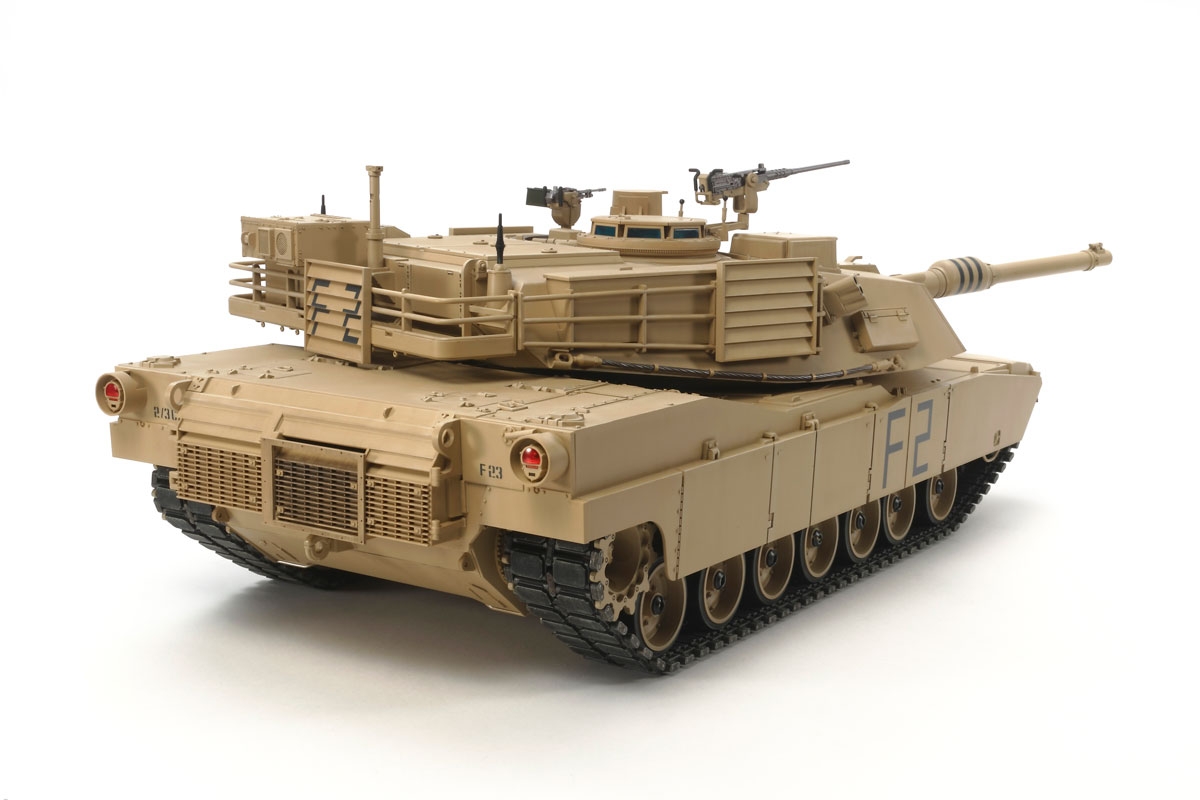
GERMAN KING TIGER PRODUCTION TURRET—#56018
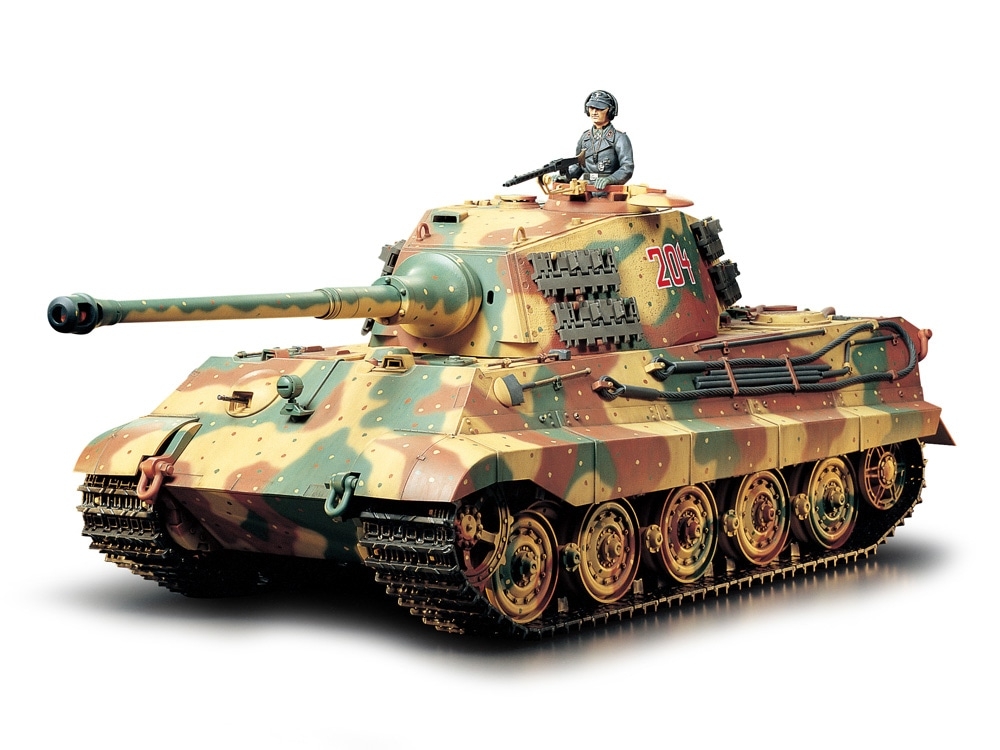
One of the most powerful and most feared tanks by the US troops during World War II was the German King Tiger. It did not hit the battlefield until 1944 and quickly made its presences known and wreaked havoc during battles. The King Tiger was well-equipped with a 71-caliber 88mm gun that was powerful enough to penetrate 6-inch thick armor from over a mile away! 150mm thick front armor was used on the front and it had 80mm thick side armor. To move this gargantuan heavy battle tank a 700hp Maybach HL230-P30 engine was spec’d.
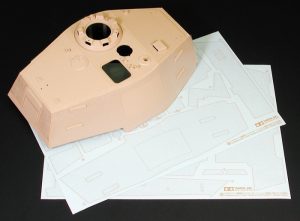 On this RC version, Tamiya went above and beyond like they usually do and gave this tank many details and functions to satisfy even the most discerning hobbyist. For example, this kit comes with Zimmerit coating that has been replicated with a unique relief printed stickers. This allows you to accurately create a model of the King Tiger that is period correct for the second half of WWII. Like some of the other tanks, the King Tiger comes with a beautifully machine aluminum barrel for the cannon and the intricate tank tracks come pre-assembled that will save you some time while building this beast. Inside the box is a commander figure that can be placed in the turret and there are a selection of decals so that you can portray three different King Tiger heavy tanks.
On this RC version, Tamiya went above and beyond like they usually do and gave this tank many details and functions to satisfy even the most discerning hobbyist. For example, this kit comes with Zimmerit coating that has been replicated with a unique relief printed stickers. This allows you to accurately create a model of the King Tiger that is period correct for the second half of WWII. Like some of the other tanks, the King Tiger comes with a beautifully machine aluminum barrel for the cannon and the intricate tank tracks come pre-assembled that will save you some time while building this beast. Inside the box is a commander figure that can be placed in the turret and there are a selection of decals so that you can portray three different King Tiger heavy tanks.
Cool factor is quite large on the Tamiya King Tiger. It has full maneuverability, forward, backward, turning, and it does it with a great sense of power. Turret rotation can be triggered remotely as well has raising and lowering the colossal 88mm gun. When either the main gun or machine gun fires, lights flash in the barrels while corresponding sounds are triggered and in complete sync.
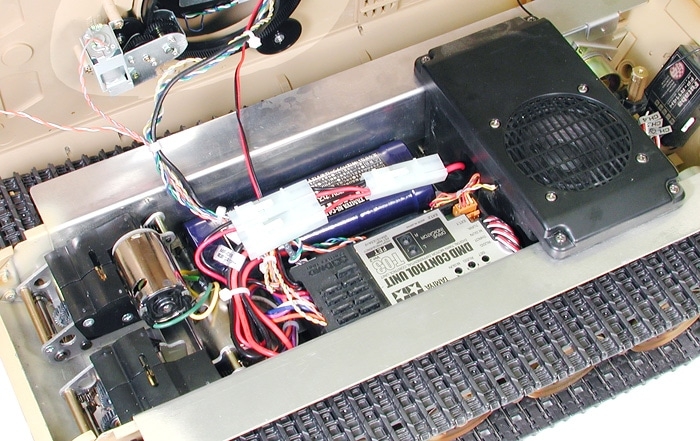
The sounds that Tamiya furnished into the King Tiger is a big part of the cool factor, especially if you are a tank aficionado. For instance, there are two types of engine starting sounds that it produces. The real King Tiger could use either an electric motor starter for general conditions or a crank starter on cold days to save battery power. On this Tamiya RC version it realistically replicates both of these starting procedures. If the transmitter is turned on first, the crank starting sound is heard and if the receiver is switched on first then the electric motor starting sound is heard. Similar to the other tanks, the 700hp Maybach HL230-P30 engine sounds were recorded directly from a real King Tiger so that the different stages of engine sound from idling through full throttle is just like the real thing. Even the metallic clanking of the tracks were recorded.
US M551 SHERIDAN—#56043
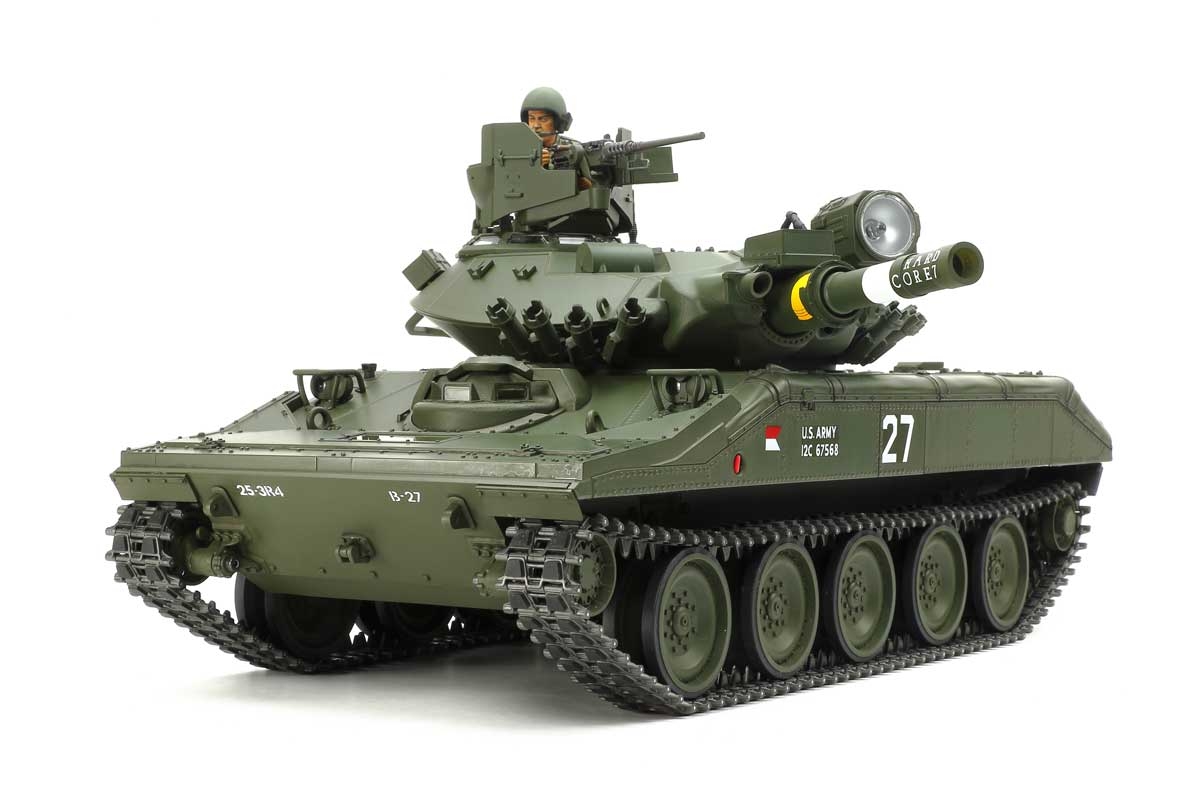
Out of the six tanks listed here, the M551 Sheridan has the most unique shape for a tank. The US designed the Sheridan specifically to be able to be airdropped and have wading capability. Vital abilities as the US took on the role of global policeman after WWII. The Sheridan was relatively light at just 15-tons with an aluminum hull and a rolled steel turret. To compensate for the reduced armor protection, it carried impressible firepower in the shape of the M81 152mm gun/launcher which could fire standard round and MGM-51 Shillelagh missiles. The M551 stayed in service with active units from 1968 all the way up to 1996 thus seeing action during the Vietnam War.
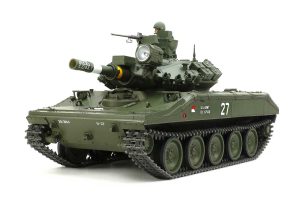 As you can expect, the M551 Sheridan is outfitted like the other Tamiya full option tanks. When you fire the guns from the transmitter, the main gun will recoil with vehicle kickback, firing sound and an LED in the barrel will flash. The much smaller machine gun also has a flashing LED and firing sounds. You get a precisely machine aluminum barrel for the cannon and aluminum is selected for the sprocket wheels, idler arms and suspension arms to give the tank exceptional durability. In order to allow the M551 to traverse off-road terrain, the suspension is supported by coil springs for each of the ten suspension arms. Engine and firing sounds are completely genuine and perfectly coordinate with the actions of the tank.
As you can expect, the M551 Sheridan is outfitted like the other Tamiya full option tanks. When you fire the guns from the transmitter, the main gun will recoil with vehicle kickback, firing sound and an LED in the barrel will flash. The much smaller machine gun also has a flashing LED and firing sounds. You get a precisely machine aluminum barrel for the cannon and aluminum is selected for the sprocket wheels, idler arms and suspension arms to give the tank exceptional durability. In order to allow the M551 to traverse off-road terrain, the suspension is supported by coil springs for each of the ten suspension arms. Engine and firing sounds are completely genuine and perfectly coordinate with the actions of the tank.
Some nice enhancements on the M551 Sheridan is the assembly design of the turret where the upper section is secured by magnets so that you can have hassle-free access to the electronics concealed inside. There are a plethora of lights that Tamiya recreated in 1/16-scale including the fully functional front searchlight that is controlled by the transmitter. Assembled tracks come with the Sheridan and feature elastomer recreations of the rubber pads that are employed by the full-size tank.
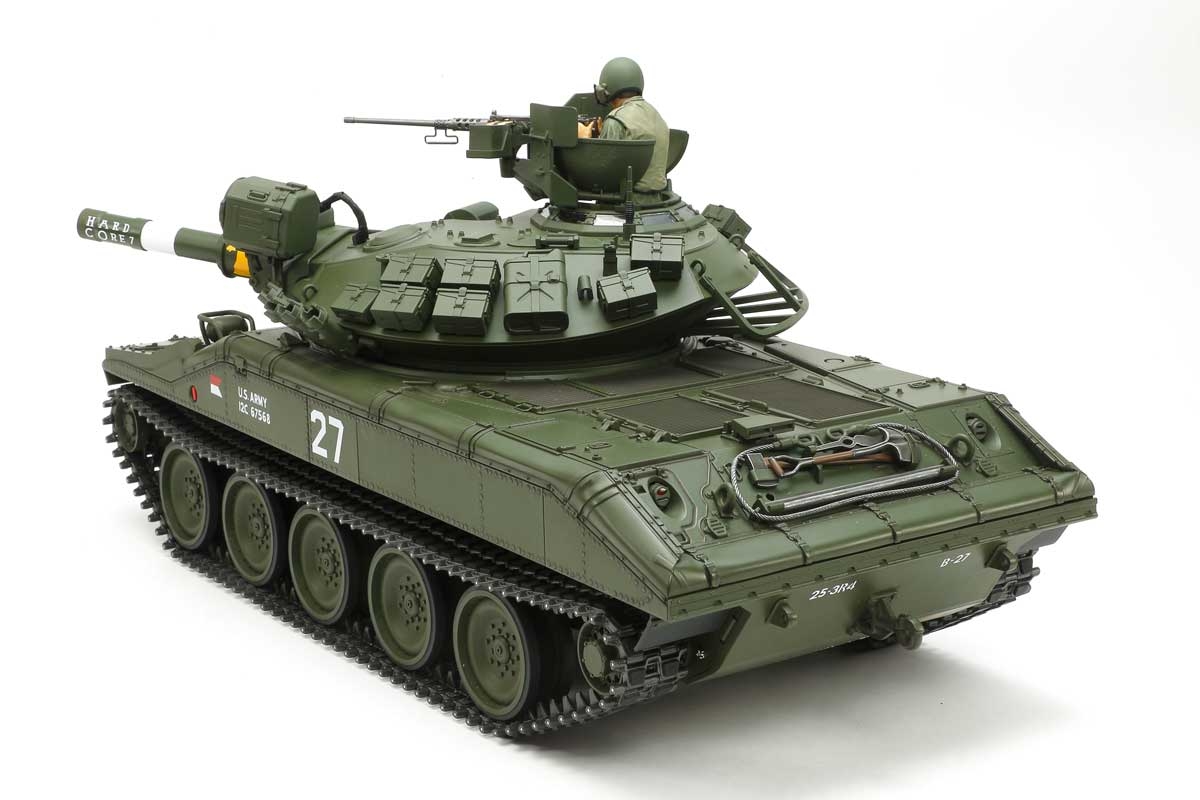
BRITISH CENTURION Mk.III—#56044
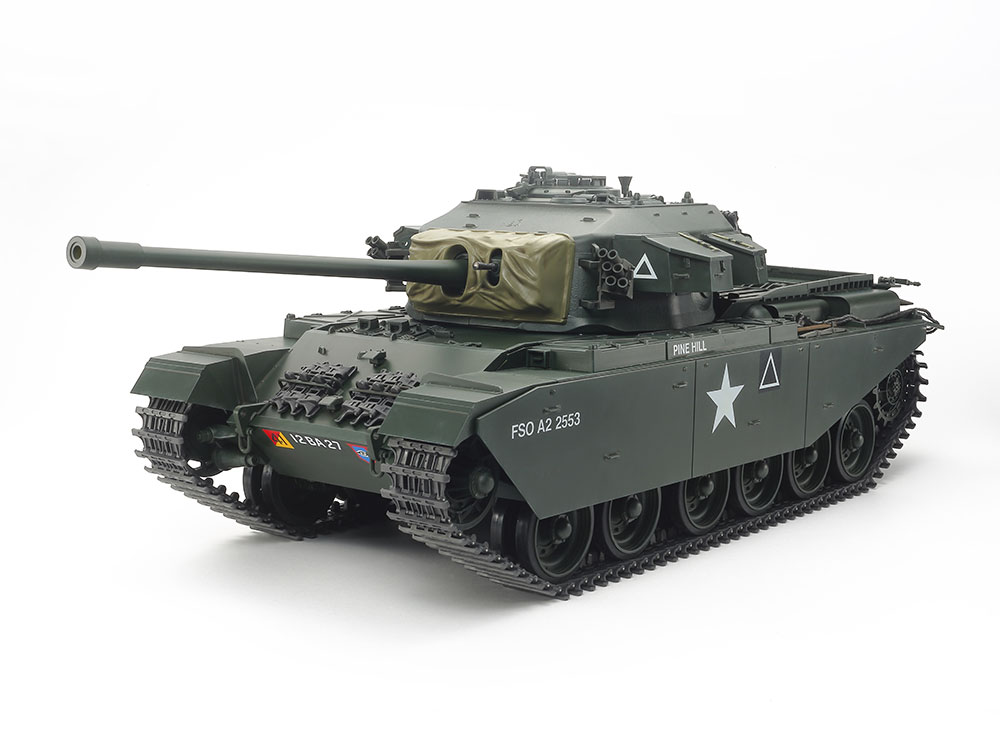
Rounding out the list of Tamiya’s current 1/16-scale RC tank line-up is the recently announced Centurion Mk.III full option British battle tank. The following is early information before the actual product release and could change.
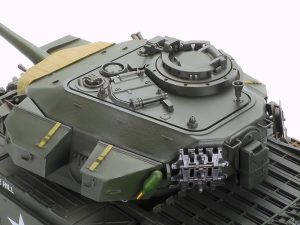 Like the rest of the tanks highlighted here, the Centurion Mk.III is an assembly kit and is a highly accurate reproduction of the full-size tank it is modeled from. It features the 20-pound long barrel cannon that is precisely machined from aluminum. Tamiya made sure to be very particular with the details. The canvas cover looks real and the tank has the same texture of the welded pattern used to construct the real tank. Full movement was given to the turret to allow control of the turret rotation and vertical movement of the barrel. The suspension mimics the Holstman type that is utilized by the actual vehicle. As for the tracks, they come pre-assembled for you which definitely saves building time.
Like the rest of the tanks highlighted here, the Centurion Mk.III is an assembly kit and is a highly accurate reproduction of the full-size tank it is modeled from. It features the 20-pound long barrel cannon that is precisely machined from aluminum. Tamiya made sure to be very particular with the details. The canvas cover looks real and the tank has the same texture of the welded pattern used to construct the real tank. Full movement was given to the turret to allow control of the turret rotation and vertical movement of the barrel. The suspension mimics the Holstman type that is utilized by the actual vehicle. As for the tracks, they come pre-assembled for you which definitely saves building time.
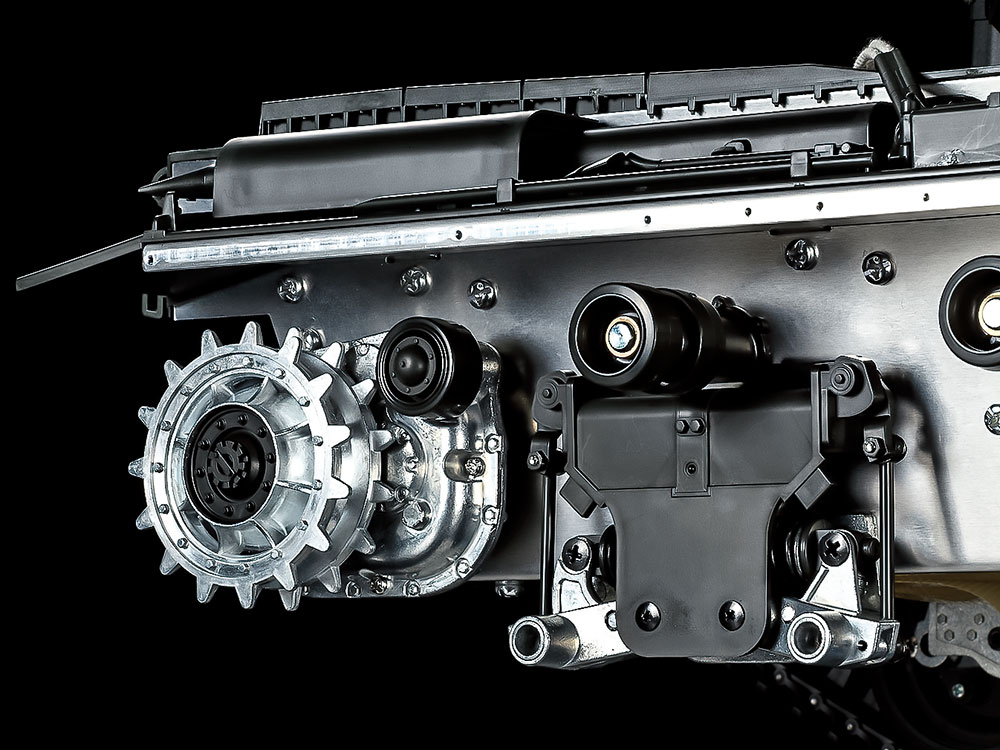
With the included DMD unit, the ultra-powerful sound of the V-type 12-cylinder 650-horsepower engine is brought to life. A large bass reflex type speaker unit with metal baffle plate is key to generate the sounds of the engine and the firing of the main gun and coaxial machine gun.
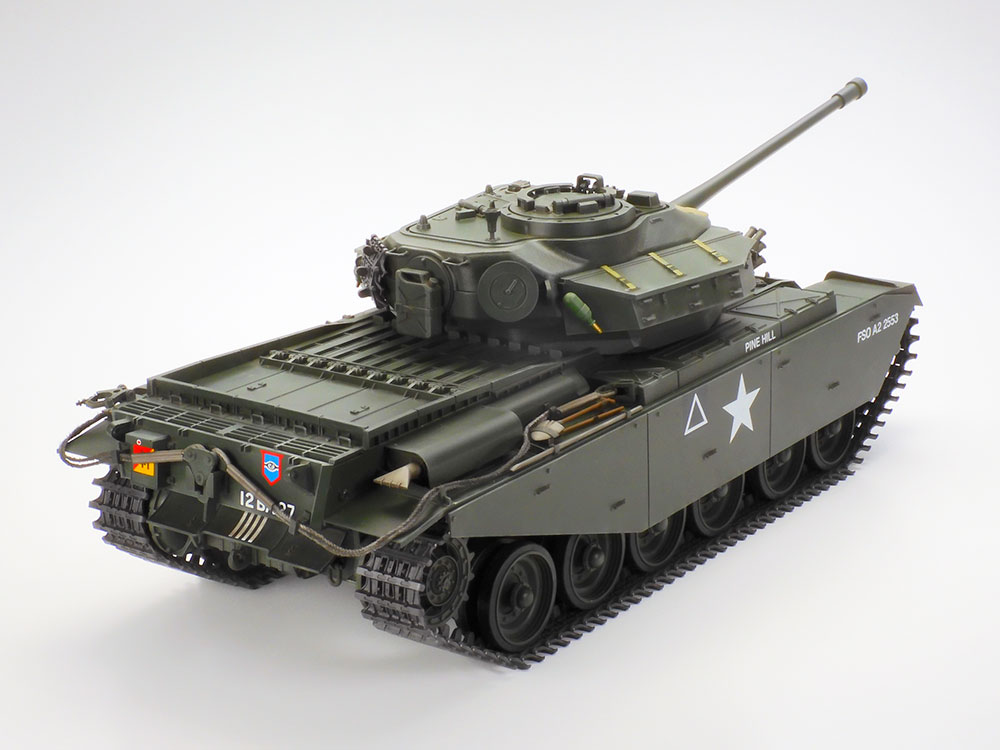
TAMIYA’S BATTLE SYSTEM HOP-UP OPTION
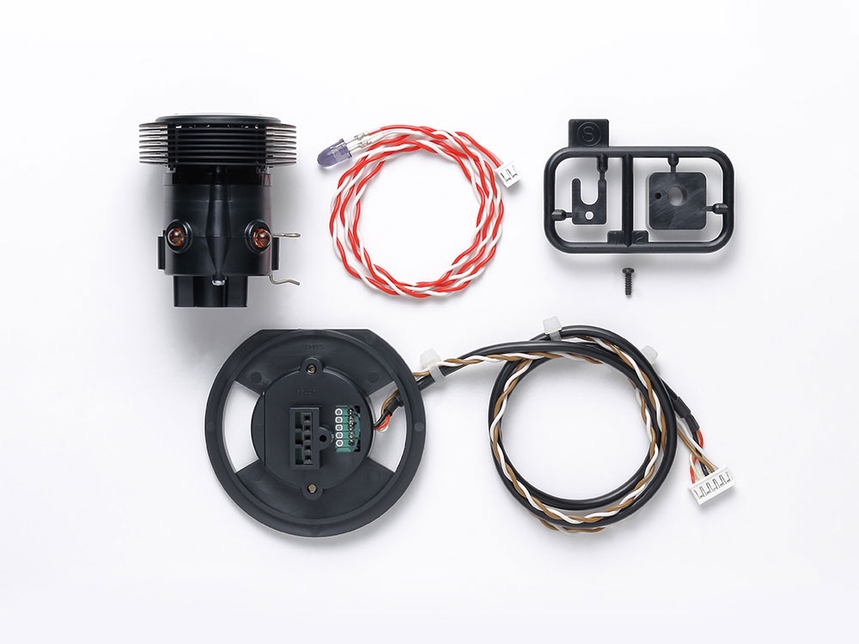
Do you want to get even more out of your Tamiya 1/16-scale RC tank and take the action to the next level? Check out the Tamiya Battle System (#53447) upgrade option. By adding the Battle 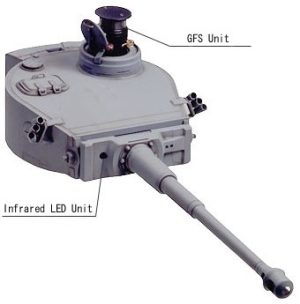 System to your tank, it allows tank-to-tank fighting with similarly equipped Tamiya tanks. The system includes the GFS (Gun Fire Simulator) unit and the infrared LED unit that will emit and detect infrared beams. The key to the Battle System is that the tank needs to be equipped with the Tamiya multifunction unit in which all the full option Tamiya tanks are and it will only work with other Tamiya tanks setup with the Battle System. And note that the Battle System can be installed even after assembly and painting.
System to your tank, it allows tank-to-tank fighting with similarly equipped Tamiya tanks. The system includes the GFS (Gun Fire Simulator) unit and the infrared LED unit that will emit and detect infrared beams. The key to the Battle System is that the tank needs to be equipped with the Tamiya multifunction unit in which all the full option Tamiya tanks are and it will only work with other Tamiya tanks setup with the Battle System. And note that the Battle System can be installed even after assembly and painting.
What makes this system extra special is that it is not just a simple ‘laser tag’ type setup where one tank shoots a beam of light at another tank and it registers a hit, but rather it offers a wide range of sound effects and actions. Like damage blast sounds, engine trouble sound, loss of speed, blast reaction, limited operation state and lastly inoperative state. There are three tank classes to select on the Battle System, either light, medium or heavy. Depending which tank class you select will determine the number of blasts your tank can endure, the interval between firing and invulnerability time so that you can perform some evasive maneuvering before being reengaged by your opponent. The Battle System has an impressive maximum range of 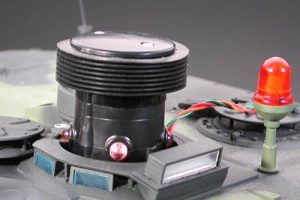 98-feet for spacious tank-to-tank battling. Tamiya has designed the Battle System to stay true to the laws of physics where hits received diagonally will harmlessly deflect off the armor plating of the tank unless the tanks are within 16-feet of each other and then the hit will register. Outside of 16-foot, only shots taken at right angles (front, side, or rear) will be effective.
98-feet for spacious tank-to-tank battling. Tamiya has designed the Battle System to stay true to the laws of physics where hits received diagonally will harmlessly deflect off the armor plating of the tank unless the tanks are within 16-feet of each other and then the hit will register. Outside of 16-foot, only shots taken at right angles (front, side, or rear) will be effective.
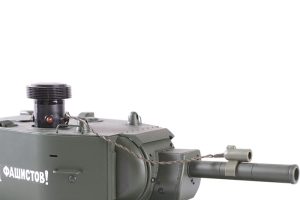 Here is an example of how the Battle System works. When your tank is hit, you will hear a damage blast sound and see your tank shake with the blast reaction effect and the GFS will flash to indicate a hit while making the sound and speed of your motor slow down. Not only that but right after the hit, your tank temporarily loses its ability to fire back since it was ‘shaken-up’ by the impact. As mentioned earlier, depending on the class tank you selected, your tank can only withstand a certain number of hits. When it reaches that number there will be an explosion sound with the GFS flashing intensely. The tank will make two final lurches forward before the engine shuts down and all tank control is lost. After a 15 second down time, the tank function will return signified by the engine start-up sound.
Here is an example of how the Battle System works. When your tank is hit, you will hear a damage blast sound and see your tank shake with the blast reaction effect and the GFS will flash to indicate a hit while making the sound and speed of your motor slow down. Not only that but right after the hit, your tank temporarily loses its ability to fire back since it was ‘shaken-up’ by the impact. As mentioned earlier, depending on the class tank you selected, your tank can only withstand a certain number of hits. When it reaches that number there will be an explosion sound with the GFS flashing intensely. The tank will make two final lurches forward before the engine shuts down and all tank control is lost. After a 15 second down time, the tank function will return signified by the engine start-up sound.
For more information about Tamiya products, visit: TAMIYA
SPONSORED ARTICLE
 RC Driver The Best In RC Car & Truck News, Reviews & Video
RC Driver The Best In RC Car & Truck News, Reviews & Video 



